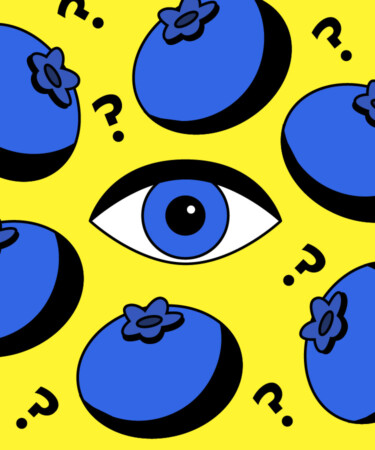This article is part of our Cocktail Chatter series, where we dive into the wild, weird, and wondrous corners of history to share over a cocktail and impress your friends.
If you squish a cherry or blackberry, their juices are dark and pigmented, as anyone who’s spent any time with a muddler can attest. But if you try the same with a blueberry, there’s no blue juice or pulp to be found. That’s because blueberries actually contain no blue pigments — so why do they appear blue to the human eye?
A new study, published on Feb. 7 in the journal Sciences Advances, discovered a unique structural mechanism behind this phenomenon. Fruits like blueberries, plums, and juniper cones develop a wax bloom on their outer layer, called epicuticular wax. A team of scientists based in Germany and the U.K. looked to this outer layer for answers, and examined its morphology. They found that the wax is made of unique nanostructures, and when light interacts with the structures, it leads to the chromatic blue and ultraviolet light reflectance that we see. The researchers refer to this type of color as “structural color.”
This study is the first to connect the thin, wax layer on fruit to its coloring. “Most plants are coated in a thin layer of wax which has multiple functions, many of them that scientists still don’t understand,” the press release for the study states. “They know that it can be very effective as a hydrophobic, self-cleaning coating. However, until now, researchers did not know how important the structure was for visible colouration.”
After studying these blue fruits, the scientists were also able to reproduce structural color in the lab by removing the wax from blueberries and recrystallizing it on a card. By allowing the wax to self-assemble, it created a brand new UV coating. The researchers believe these findings can have further applications in the creation of biomaterials such as a more sustainable — and even edible — blue reflective paint.
“It was really interesting to find that there was an unknown coloration mechanism right under our noses, on popular fruits that we grow and eat all the time,” Rox Middleton, research fellow at Bristol’s School of Biological Sciences said in the study’s release. “It was even more exciting to be able to reproduce that color by harvesting the wax to make a new blue coating that no one’s seen before.”
*Image retrieved from Nikolay via stock.adobe.com
